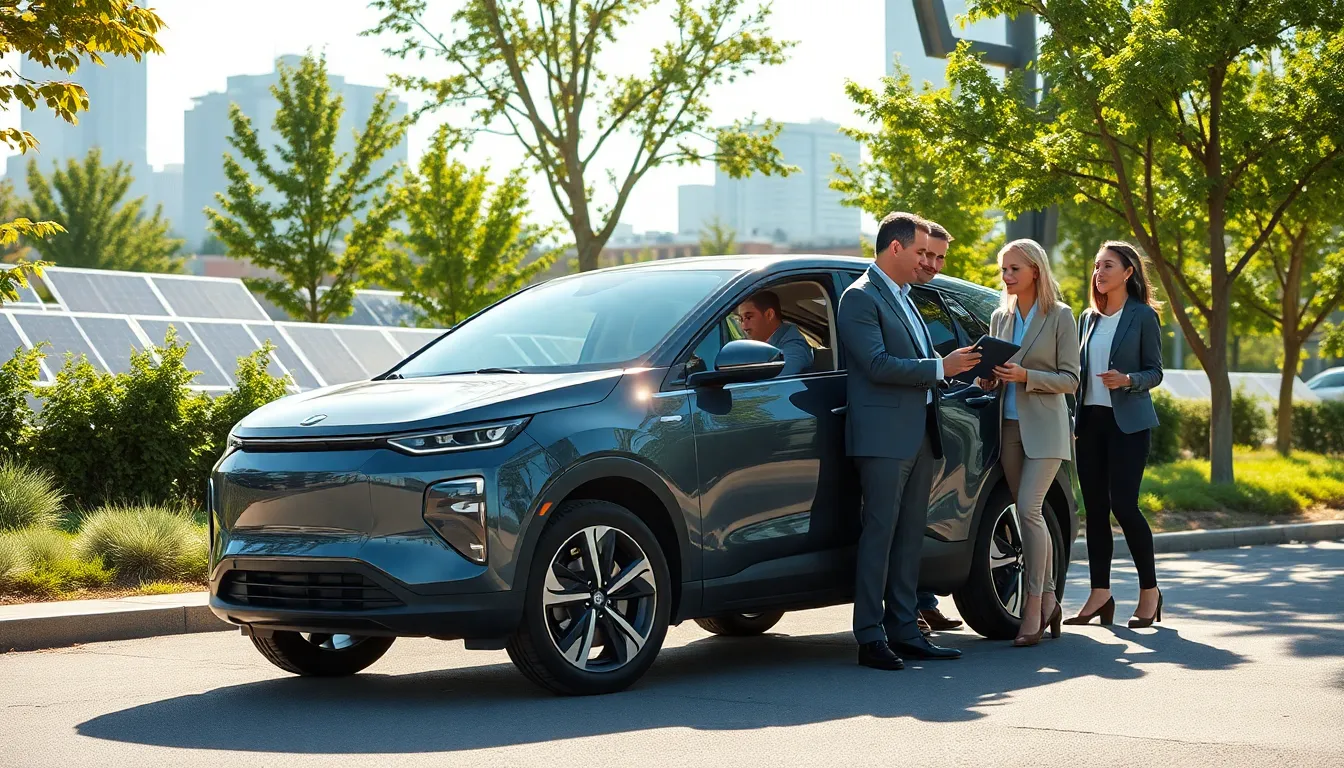Imagine zooming down the highway in a vehicle that’s not just saving the planet but also saving you money. How does it work? Well, electric vehicles, or EVs, are the sleek, silent heroes of modern transportation. They might not fly like your favorite sci-fi movie cars, but they do have a fascinating under-the-hood story that rivals even the wildest plot twists. Today, let’s peel back the layers of these eco-friendly machines and understand just what makes them tick.
Table of Contents
ToggleUnderstanding Electric Vehicles

Electric vehicles run on electricity rather than gasoline or diesel. This innovative approach is not just about having an energy-efficient ride: it’s also a move toward reducing greenhouse gas emissions. Unlike traditional vehicles that rely on combustion engines, EVs use electric motors, which offer an instantaneous torque that can make driving feel like a dream. In fact, many enthusiasts find that EVs can out-accelerate their gas-powered counterparts, all while being quite gentle on the environment.
But how did we get here? With the rise of renewable energies and a growing awareness of environmental issues, electric vehicles have become increasingly popular, with technology improving exponentially. From compact cars to luxurious sedans, the options are growing, making them accessible to a wide array of consumers. Plus, knowing you’re contributing to cleaner air and a brighter future is quite the cherry on top.
Key Components of Electric Vehicles
Understanding how electric vehicles work also involves knowing their main components. At the heart of any EV, you will find:
- Battery Packs: These are not just ordinary batteries: they are the lifeblood of electric vehicles. Lithium-ion batteries are the most commonly used because of their high energy density and long lifespan.
- Electric Motor: The electric motor drives the wheels. Unlike internal combustion engines, it has fewer moving parts, resulting in a more compact and lighter unit.
- Inverter: This component converts direct current (DC) from the batteries into alternating current (AC) to power the electric motor. It also helps in regenerative braking, turning the vehicle’s kinetic energy back into electricity.
- Charging Port: This is the gateway to energy. It allows drivers to plug in their vehicles to charge, whether at home or at public charging stations.
Together, these components create a powerful synergy, allowing electric vehicles to transport drivers smoothly and efficiently.
How the Electric Powertrain Functions
So, how does the actual magic happen when you press the pedal? The process starts with the battery pack, which sends electricity to the inverter. Next, this inverter kicks into gear, converting DC to AC, sending it straight to the electric motor. The motor then creates the rotational force that drives the wheels.
One of the standout features of an electric powertrain is its ability to use regenerative braking. This system captures the energy usually lost when braking and feeds it back into the battery, giving drivers some extra mileage. It’s like getting a little boost every time you cruise to a stop.
Also, the efficiency of an EV powertrain generally far exceeds that of traditional vehicles. This efficiency is why many users report lower energy costs compared to gas. Electric motors can convert over 60% of the electrical energy from the grid to power at the wheels, a figure that traditional gasoline engines can only achieve at about 20%.
Charging Electric Vehicles
Charging an electric vehicle can happen at home, work, or public charging stations, offering flexibility that drivers of gas-powered cars can only dream about. Here’s the lowdown:
- Level 1 Charging: This uses a standard household outlet and can take a while, usually 8 to 20 hours for a full charge. Great for overnight charging.
- Level 2 Charging: Often found in public places, this method uses a 240-volt outlet, charging an EV in about 4 to 8 hours.
- Level 3 Charging (DC Fast Charging): This is where the magic happens. These chargers can charge a vehicle’s battery to 80% in about 30 minutes. Perfect for road trips or when quick refueling is necessary.
Even though the common myths that charging stations are sparse, the network is rapidly growing. Many cities now boast extensive charging infrastructure, making it increasingly convenient for EV owners to charge their vehicles.
Comparing Electric Vehicles to Gas-Powered Vehicles
Comparing electric vehicles and their gasoline counterparts is like pitting a superhero against a villain. Both have their merits, but the future seems to be leaning in favor of EVs. Here’s a breakdown:
- Efficiency: Electric vehicles are generally much more efficient than gas-powered cars. They convert the energy stored in their batteries directly to movement without the energy loss prevalent in combustion engines.
- Maintenance: EVs require less maintenance due to fewer moving parts. No oil changes, no air filters to replace, and much lower wear and tear on brakes thanks to regenerative braking.
- Environmental Impact: EVs produce zero tailpipe emissions. This means cleaner air in our cities, which directly contributes to better health and cleaner ecosystems.
Of course, the initial cost of EVs tends to be higher, but many users find that the savings on fuel and maintenance more than make up for the purchase price.
Future Trends in Electric Vehicle Technology
The future of electric vehicles is not just bright: it’s glowing. Innovations are underway, zipping down the highway to redefine transportation. Here are a few trends to watch:
- Battery Technology: Ongoing research aims to improve battery capacity and decrease charging times. Solid-state batteries, for instance, promise to store more energy without sacrificing safety or longevity.
- Autonomous Driving: Many electric vehicle manufacturers are also at the forefront of developing autonomous driving technology. Imagine kicking back and enjoying the scenery while your car does the driving.
- Infrastructure Development: As electric vehicle adoption grows, so does the charging infrastructure. Expect to see more fast chargers spread out across highways and urban areas, making long-distance travel more feasible.
These advancements hint at a revolutionary shift in how we think about travel, sustainability, and efficiency.
